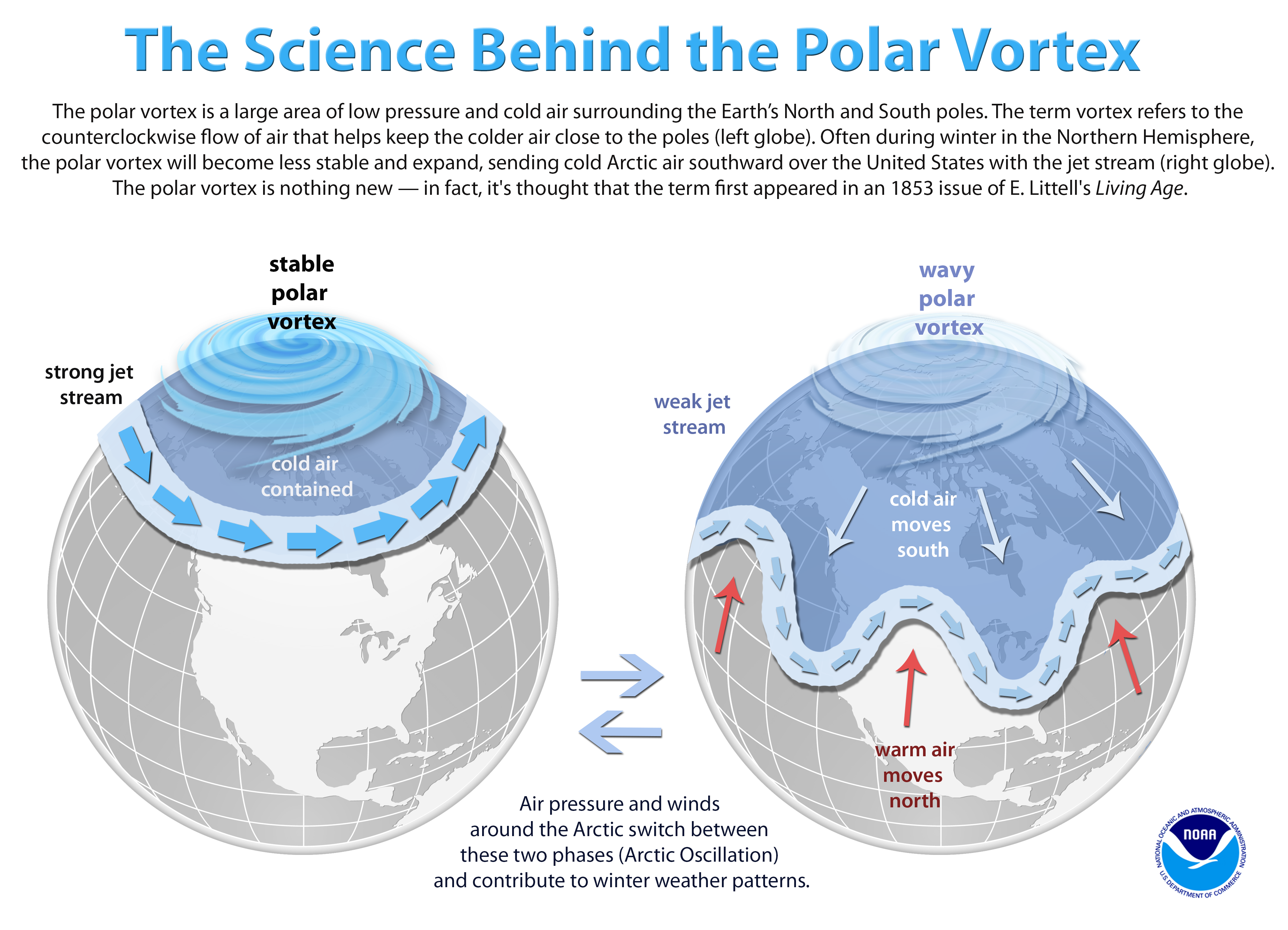Wait. We just spent all that time talking about all of these more frequently occurring and more severe heat waves. Extreme cold? Although very cold days, very cold nights, and total frost days have declined over the past few decades, cold waves are still a problem and more recent studies are exploring the link between a changing climate and periods of extreme cold weather. This issue got a fair bit of attention in the early winter months of 2019, as the eastern US found itself subject to another polar vortex event. Cold weather is often a favorite talking point for overly simplistic climate denial, but in reality, the connection is much more complex and cold weather is anything but an indication that climate change isn't real. A changing climate is destabilizing the jet stream and allowing Arctic weather to dip down to lower latitudes than it otherwise would here in the US. Luckily, many popular news outlets tried to get in front of this by offering explanations of how climate change and cold snaps are related (see National Geographic's Why Cold Weather Doesn't Mean Climate Change is Fake, Climate Reality Project's Yes It's Cold, and Yes Our Climate is (Still) Changing, or Scientific American's Why Global Warming Can Mean Harsher Winter Weather).
Much like heat waves, vulnerability is determined in a large extent to one's exposure. The most vulnerable among us are those people without adequate housing or reliable heat sources. People with existing health conditions or who are very young or very old are more sensitive. This NY Times article, Extreme Cold Weather Spreads East, offers a glimpse at many of the human health issues authorities were dealing with during this cold wave event in early 2019.

Image Reads:
“The polar vortex is a large area of low pressure and cold air surrounding the Earth’s North and South poles. The term vortex refers to the counterclockwise flow of air that helps keep the colder air close to the poles (left globe). Often during winter in the Northern Hemisphere the polar vortex will become less stable and expand, sending cold arctic air southward over the United States with the jet stream (right globe). The polar vortex is nothing new – in fact, it’s thought that the term first appeared in an 1853 issue of E. Littell’s Living Age.”
Image Shows:
Left globe: A strong jet stream and a stable polar vortex keep the cold air contained.
Right globe: A weak jet stream and wavy polar vortex allows the cold air to move south. Warm air moves north and creates pockets of warm and cold.
Between the globes, the image says, "Air pressure and winds around the Arctic switch between these two phases (Arctic Oscillation) and contribute to winter weather patterns."
